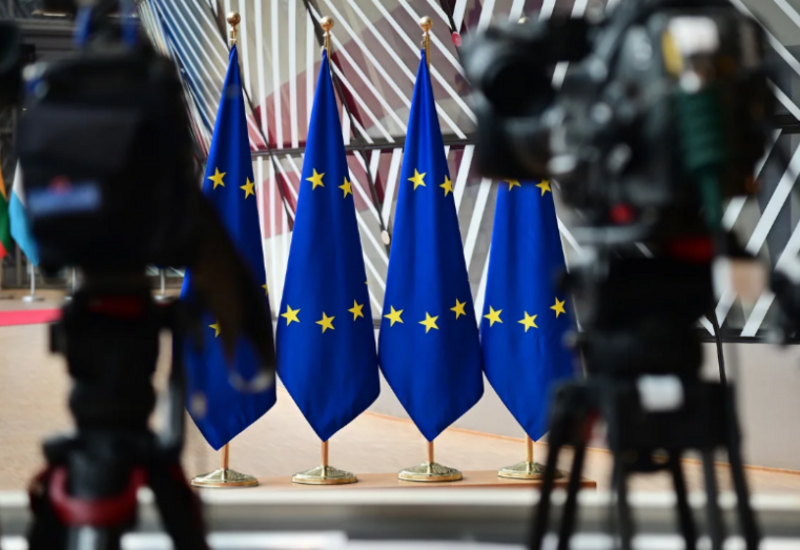|
|
TODAY.AZ / Analytics
Armenia's economic dependency: Trade growth or political illusion?
02 October 2024 [16:47] - TODAY.AZ

The geopolitical landscape of the South Caucasus is undergoing significant changes, particularly in light of the ongoing conflict in Ukraine and the West's subsequent sanctions on Russia. While some countries in the region, like Azerbaijan and Georgia, have shown more restrained trade relations with Russia, Armenia has seen a dramatic surge in its economic ties with Moscow, particularly during the tenure of Prime Minister Nikol Pashinyan. This fact was once again highlighted in recently held Eurasian Economic Forum in Armenian capital Yerevan on Tuesday.
Minister of Economic Development of Russia, Maxim Reshetnikov, highlighted the significant impact of Eurasian integration on Armenia’s trade relations during an interview with Armenian media prior to the forum in Yerevan. Reshetnikov noted that since Armenia joined the Eurasian Economic Union (EAEU), its trade turnover with member countries has increased sixfold, while exports have surged by an impressive fifteen times. He emphasised that this growth is largely attributed to the strengthening of Armenia's economic ties with Russia. Additionally, he pointed out that remittances from the Russian Federation account for approximately 5% of Armenia's GDP. Currently, around 60 major Russian business projects are underway in Armenia across various sectors, including IT, high technologies, mining, and manufacturing, indicating a deepening economic partnership between the two nations. As we can see, although there are opinions about the integration of Armenia into the West, the economic indicators show the opposite. In order to understand the changes in economic relations with Russia in the last three years, let's consider the dynamics of the trade relations of each of the South Caucasus countries with Russia and conduct a comparative analysis of these dynamics.
While Western countries have imposed sanctions against Russia, they have largely refrained from extending similar measures towards Armenia. This inconsistency raises questions about the sincerity of the West's position, as they portray Armenia as a nation moving away from Russian influence .
In contrast to the stagnation in trade relations between Azerbaijan and Georgia with Russia, Armenia's engagement has intensified. Azerbaijan's trade turnover with Russia increased by only 1.45 times, with a gradual and modest rise in its foreign trade relations. Meanwhile, Georgia's trade turnover with Russia, although initially increased in 2022, has since shown a decline. This trend not only underscores Armenia's growing economic dependency on Russia but also raises pertinent questions about the future trajectory of its foreign policy. How will Armenia navigate its relationships with Western nations while deepening its ties with Moscow?
To exhibit the exact numbers:
Azerbaijan's trade relations with Russia have been steady, with a 1.45-fold increase in total trade turnover between 2021 and 2023, amounting to $4.36 billion. During the same period, exports rose by 1.3 times, reaching $1.12 billion, while imports grew by 1.52 times to $3.16 billion. However, in the first half of 2024, total trade reached $2.17 billion, with imports increasing by 4.4%, while exports declined by 10%, totaling $557 million.
From 2021 to 2023, Russia's share in Azerbaijan’s foreign trade saw minimal change, with exports dropping slightly from 4.15% to 3.53%, and imports increasing marginally from 17.7% to 18.3%. By mid-2024, exports to Russia accounted for 4.31%, while imports stood at 18.17%. This indicates that while trade volumes between Azerbaijan and Russia have grown, the overall share of Russia in Azerbaijan's trade has remained relatively stable. (Source: State Customs Committee of Azerbaijan)
The most striking shifts occurred in Armenia's trade with Russia. From 2021 to 2023, Armenia's trade turnover with Russia surged 2.6 times, reaching $7.4 billion. Imports from Russia doubled during this period, while exports quadrupled. This sharp rise is unprecedented in the region and reflects Armenia’s growing economic dependency on Russia. In fact, by 2023, 5% of Armenia’s GDP was derived from remittances from Russia. The upward trajectory continued into 2024. During this period, imports from Russia doubled, while exports to Russia quadrupled. This growth trend continued into 2024, where, in the first five months, Armenia's trade turnover with Russia was $190 million higher than the total for 2023. In just the first five months of the year, Armenia’s trade turnover with Russia surpassed the total trade for 2023. Unlike previous years, where export growth dominated, import growth played a key role in the 2024 increase. This suggests a deeper economic entanglement with Russia, despite Western narratives portraying Armenia as distancing itself from Moscow.
Notably, the sharp increase in the volume of imports played a crucial role in this growth in 2024. Specifically, imports soared by five times compared to the same period in the previous year, while exports saw a decline of 20.5%. This is a stark contrast to the previous years, where rapid growth in export volumes to Russia was the norm.[FOR STATS]. Changes in trade dynamics have also impacted Russia's share in Armenia's foreign trade. Russia's share of Armenian exports climbed from 28% to 45% in 2022, then fell to 40% in 2023 and 17% in the first five months of 2024. Meanwhile, Russia's share of Armenian imports decreased from 37.3% to 32.5% over the 2021-2023 period, but saw a dramatic rise to 69% in early 2024.
However, a notable shift occurred in 2024. While Armenia's exports to Russia began to decline, imports saw a significant increase. This shift might suggest a reduced role in re-exporting, but this interpretation oversimplifies Armenia's ongoing engagement in trade. In fact, Armenia has resumed participation in exporting products from Russia to third countries, particularly evident in the diamond trade. In 2023, Armenia imported approximately 3.5 million carats of diamonds, 48% of which originated from Russia. A staggering 96.2% of the diamonds exported by Armenia were re-exported, predominantly to the UAE and Russia.
Moreover, with the European Union imposing sanctions on Alrosa, Russia's largest diamond mining company, it is likely that Russia will increasingly rely on Armenia and similar countries to navigate these sanctions. Thus, while Armenia's exports to Russia may have decreased, the country continues to facilitate trade for Russia, adapting its role in the supply chain.
As a result, Armenia's trade relations with Russia are not only expanding but evolving. In 2024, it is anticipated that Russia's share in Armenia's foreign trade turnover will exceed 46%. The ongoing dynamics indicate that Armenia remains a critical player in helping Russia circumvent sanctions, transforming from a primary exporter to Russia into a facilitator of Russian products to global markets.
Overall, we can observe, Armenia's trade relations with Russia have flourished significantly during Pashinyan's tenure, revealing a complex interplay between regional politics and economic realities. While Pashinyan advocates for Western integration and presents himself as a peace-oriented leader, the stark increase in trade turnover with Russia signals a deepening dependence that contradicts his narrative.
URL: http://www.today.az/news/analytics/253611.html
 Print version
Print version
Connect with us. Get latest news and updates.
See Also
- 11 December 2025 [14:00]
Azerbaijan’s patience pays off as 907 Amendment nears its end - 11 December 2025 [08:30]
Emerson experts highlight how robotics transforming corrosion monitoring - 10 December 2025 [14:23]
Garabagh emerges as new investment hub ahead of major forum - 07 December 2025 [15:27]
Kocharyan’s reckless rhetoric exposes real enemy of Armenia’s future - 04 December 2025 [20:43]
Yerevan’s narrative on detainees masks domestic politics [OPINION] - 04 December 2025 [08:30]
Azerbaijan unveils AI platform in bid to become Caucasus innovation hub - 03 December 2025 [19:50]
Baku’s strategic patience ends Minsk Group era, rewrites regional power dynamics - 01 December 2025 [13:58]
Baku positions itself as regional digital hub through WTDC-25 - 29 November 2025 [08:30]
Banking sector strengthens as capital, credit and digitalization advance - 28 November 2025 [08:30]
President Aliyev places industry and innovation at centre of economic reform
Most Popular
 Parallel worlds of European Union and South Caucasus
Parallel worlds of European Union and South Caucasus
 The intricacies of diplomacy: why is the 3+3 meeting postponed?
The intricacies of diplomacy: why is the 3+3 meeting postponed?
 Hasty visit to Germany - what did Pashinyan lose from Merz?
Hasty visit to Germany - what did Pashinyan lose from Merz?
 President Ilham Aliyev holds one-on-one and extended meetings with Chairman of Slovak National Council
President Ilham Aliyev holds one-on-one and extended meetings with Chairman of Slovak National Council
 ICESCO Director-General to pay visit to Turkic Culture and Heritage Foundation
ICESCO Director-General to pay visit to Turkic Culture and Heritage Foundation
 President Ilham Aliyev receives UK and Northern Ireland Trade Envoy to Azerbaijan
President Ilham Aliyev receives UK and Northern Ireland Trade Envoy to Azerbaijan
 OIC Cultural Festival discusses culture of Islamic countries in digital age
OIC Cultural Festival discusses culture of Islamic countries in digital age
